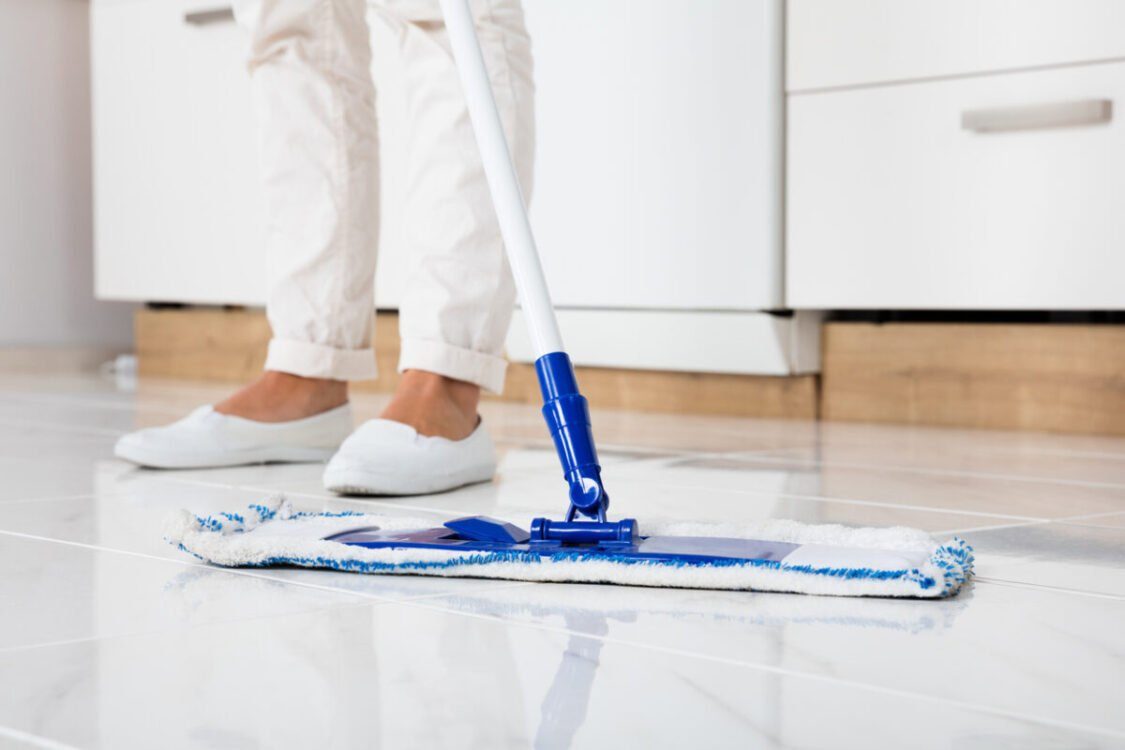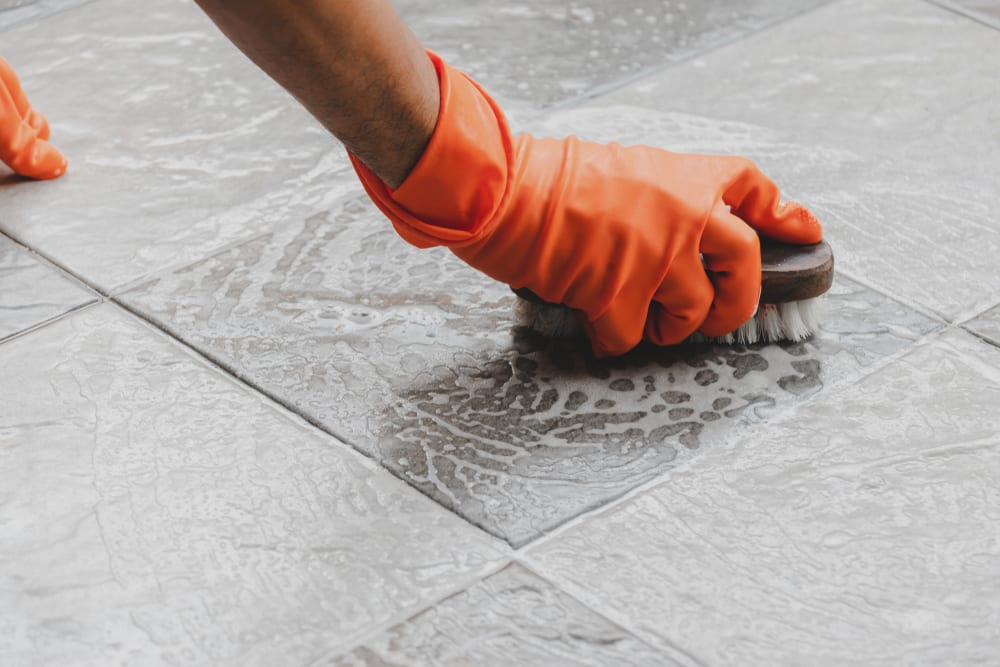Cleaning porcelain floors can seem like a lot of effort. However, when you know what to do, this process becomes quite easy. Sometimes it doesn’t take great products to make the floor spotless, because a little vinegar and other natural elements could be the key to a spotless floor.
Choosing the floor that you will have in your home is something really important because this decision will accompany you for years. Porcelain stoneware flooring, for some time now, has become the first choice for many people, because, in addition to offering a wide variety of models, it is a really easy surface to maintain in good condition and offers great resistance.
There are many ways to lay porcelain flooring, as it adapts well to different rooms. In fact, it can be a kitchen, terrace, or living room floor without any problem. However, no matter where you place the tiles, the maintenance will be the same.
Surely, as you read, you will notice how vinegar becomes an essential element in almost all processes.
How To Clean The Porcelain Floor After Work?
Your first contact with this type of flooring will probably be after it has been installed, and this initial cleaning is quite important and peculiar. You will have to scrub the floor more than once, because the stoneware floor will be full of lime and cement stains and, in addition, its appearance will be quite opaque.
Contrary to what you might think cleaning very dirty floors involves, at this time it is not recommended to use any chemicals or products, as these could be abrasive. For this cleaning, you will only use a soft mop and plenty of warm water. If the dirt doesn’t come out, you just have to keep trying and, if it persists, add a little white or apple vinegar diluted in the water.
Clean floors like a pro
After those first cleanings of porcelain floors, you can start acquiring a routine to leave your home impeccable. Because the tiles already have the resistance that characterizes them, cleaning time can be more thorough and without complications.
You can make use of a homemade floor cleaner, if you wish, or simply buy a product made specifically for this type of floor.
1) Clean Rough Porcelain Floor
The rough floor is one of the most used in homes, especially when it comes to outdoor terraces, as its texture and design easily capture attention. However, due to this texture, it is impossible to use mops without them deteriorating and it is not ideal to use very strong products.
Cleaning the porcelain floor with vinegar, using a bristle brush or a mop specialized in rough textured floors, maybe what you need to keep the surface impeccable. 
2) Clean Imitation Wood Porcelain Floor
Wood, par excellence, is one of the most recognized materials in terms of design. However, the fact that its maintenance can be somewhat demanding and complicated makes many people desist from acquiring it.
For example, recovering a whitish parquet or cleaning planks with dark stains can be a nightmare for some, therefore, a wood-effect ceramic floor often becomes the ideal option. This floor has the appearance of real wood, but requires no stain or wax, is resistant to moisture, and is suitable for both indoor and outdoor environments.
Although constant sweeping is not recommended, an electric broom can be an excellent device to remove dust and dirt before using a mop. After that, you will only need to use a neutral detergent and warm water to make the floor shiny. Always keep in mind that you should not use detergents with rinse aid, as these could cause stains.
If you’re looking for something natural, a mixture of water, white vinegar, and lemon drops can be quite effective. In addition, it will provide a refreshing smell to the place.
3) Clean Black Porcelain Floor
While black is great at hiding dirt when it comes to soap stains, they will stand out against the dark background, so be careful when cleaning.
It is best to use a soap with a neutral pH that does not generate much foam, and then rinse with warm water and dry completely, without leaving accumulations of water. This will manage to maintain the color of the floor so that later you do not have to paint the porcelain floor.
How Do You Clean Floor Joints?
Although tiles can be cleaned properly, floor joints are almost always stubborn and tend to collect a lot of dirt. If you’re wondering how to clean floor joints that are black over time, then you may be surprised to learn that as long as you know what to do, the process is easy.
Cleaning floor joints with vinegar and a little baking soda is a natural, safe, and easy way to turn these sections of flooring back to white, without using harsh chemicals.
A mixture of 4 tablespoons of baking soda and 10 cl of white vinegar in a glass of water will weaken the dirt over a period of 24 hours so that, in the morning, you can clean the joints with a small brush dipped in warm water. In this way, you will be able to remove the dirt and, in addition to that, you will whiten the joints that, most of the time, lose their color due to the passage of time and due to the constant use of which the floors are subjected.























